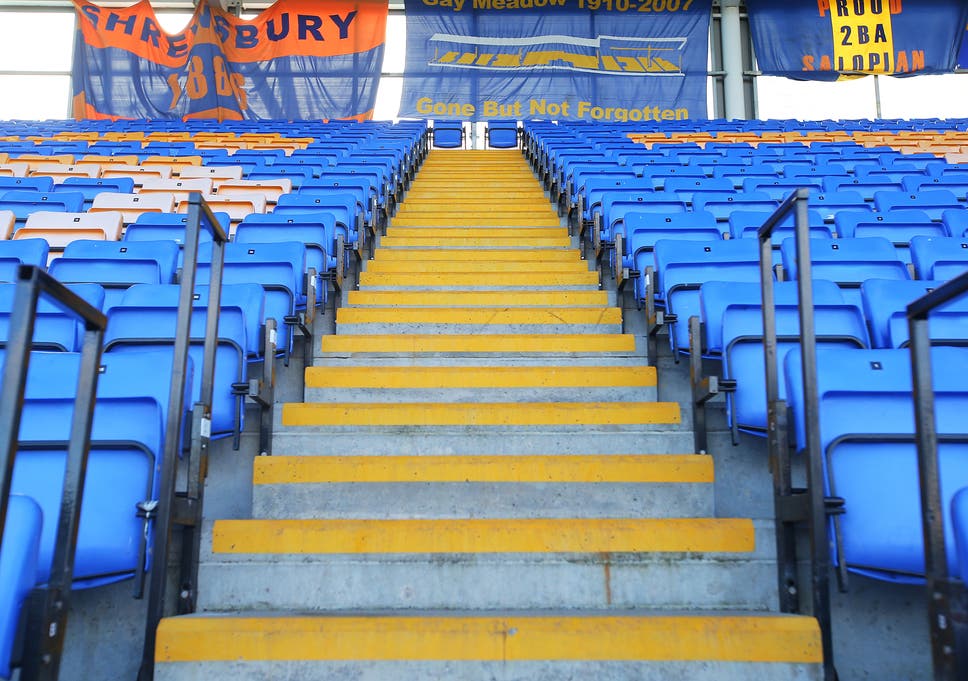
Terracing didn’t cause the Hillsborough disaster. It’s time for standing to return
For years the link in the public’s mind between standing and Hillsborough made it more difficult to get the message across about where the real blame lay for the 96 deaths, as some of the families tell The Independent
by Tony EvansThe time has come for standing to return to top-flight English stadiums. Even the Conservative government knows that.
On Merseyside people often instinctively disagree with anything the Tories propose. On this subject most Scousers concur with their political enemies. There is a myth that the legacy of Hillsborough means Liverpool supporters are opposed to the reintroduction of standing. If that was ever true it is no longer plausible. The dwindling list of opponents to the implementation of rail seating in Premier league grounds have less credibility with every year.
This week Nigel Adams, the sports minister, said Westminster is “keen to deliver” on a manifesto pledge to reintroduce standing sections. The Sports Ground Safety Authority has been commissioned to produce a report as a prelude to new legislation. There is growing expectation that rail seating will be allowed. This is where seats can be locked shut to create a single standing space. The area is protected by barriers in front and behind to protect individuals from any crush in the crowd. It is used by Celtic in Scotland and extensively across Europe.
Adams told The Independent: “We need to be guided by the evidence and be mindful of everyone; the fans, the Hillsborough families. Clearly the most important thing is the safety of fans and people at the grounds.”
It all sound perfectly reasonable. Except it depends which of the Hillsborough families are consulted by the compilers of the report.
The move to all-seater arenas came in the wake of the 1989 disaster at Sheffield Wednesday’s stadium. Since then, the Hillsborough Family Support Group (HFSG) has been implacably opposed to any form of standing. Because of this, a widespread misapprehension has spread that Liverpool – as a club and a fanbase – are one of the main factors blocking the implantation of rail seating. It is not true. Even among the families of the 96 people who died as a result of English football’s worst disaster there are voices calling for the reintroduction of standing.
Louise Brookes’ brother Andrew Mark died on 15 April 1989, and his sister has been a strong voice in the campaign for justice. Brookes is a vocal advocate of a return to terracing under the right conditions. “Standing did not kill anyone,” she told The Independent. “The disaster was caused by a dangerous stadium and the failure of the police. If it is controlled and organised properly, rail seating is much safer than the situation we have now where people stand up in seats.”
Richie Greaves, who was in pen 3 on the Leppings Lane and is active in survivors’ circles, agrees. “We all laugh about having Kopite’s shin,” he said. “It’s all the cuts and bruises you get during goal celebrations. They are not serious injuries but you see people go flying over seats. Fans will always stand up so the best way forward is to make it as safe as possible with rails in front and behind every fan so they can’t fall over the backs of the seats in front.”
The HFSG has been the most prominent of the Hillsborough groups, with the most political influence, and its anti-standing position has set the agenda on the subject for more than two decades. That position is at odds with the beliefs of most regular attendees of Anfield. A poll of 18,000 fans conducted by the Spirit of Shankly supporters union three years ago recorded that 88 per cent of respondents were in favour of rail seating.
It is easy to understand why there are emotional arguments against safe standing from bereaved family members. Right from start, however, serious analysis dismissed the notion that the terraces were the root cause of the disaster. In 1990 Lord Justice Taylor’s report stated that “standing accommodation is not intrinsically unsafe.” The link in the public’s mind between standing and Hillsborough made it more difficult to get the message across about where the real blame lay for the 96 deaths. Sealed off pens with no escape routes, terraces filled to overcapacity with unwitting paying customers and a catastrophic failure of the police and emergency services caused the fatalities and injuries at Hillsborough. Even on a terrace that did not have a current safety certificate, the carnage could easily have been avoided if policing had been conducted to even the most minimal standards the public have the right to expect.
“Most survivors and the majority of Liverpool supporters are in favour of rail seating,” said Greaves. “People expect me to be against it given my experience. But I’m in favour of making sure football fans are as safe as they can be when they are watching the match.”
Brookes is even more forthright. “Standing should be back on the Kop,” she said. “Andrew took me when I was young and he would have hated what we have now. Seated stadiums were not about making people safe. It was all about politics and profit. I’m sick of his death being used to justify it.”